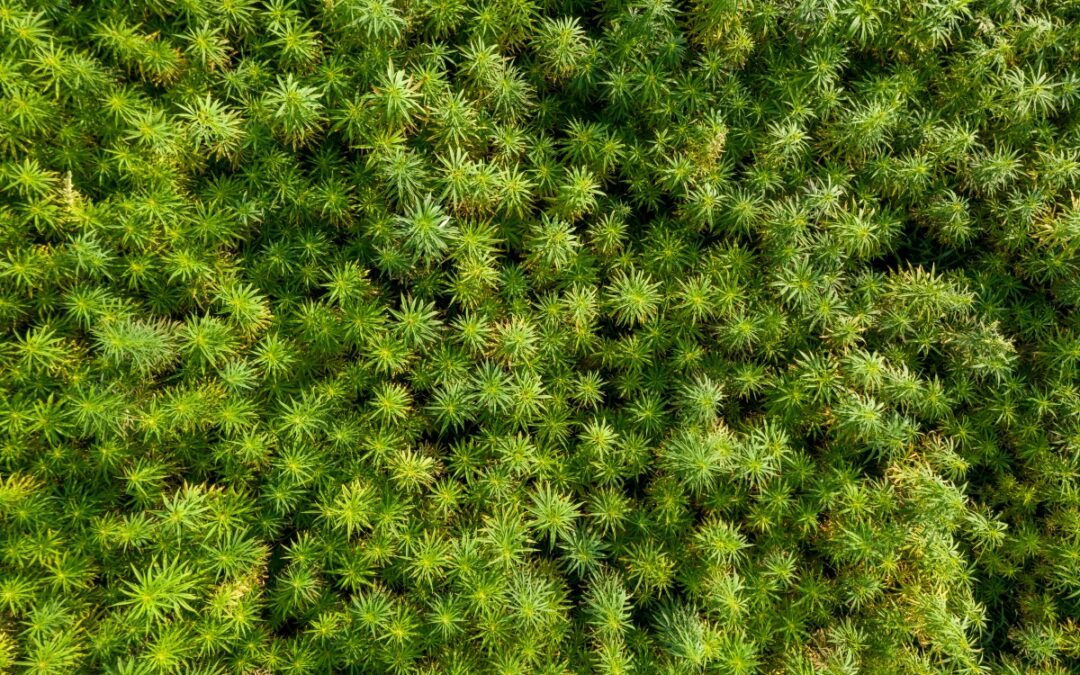If someone asks you what CBD is, what would be the answer? Something that helps you relax without producing a high? Something that offers multiple health benefits, but you’re not sure how? Not many people will say that ‘CBD is one of many compounds called cannabinoids that are found in the Cannabis Sativa L. plant’.
Even though we all know CBD, we still can’t define its benefits and why we should take it. To get a grip on the terms, you must first understand the cannabis plant, which is the foundation of everything.
Let’s find out more!
Cannabis and Hemp
Nowadays, people get more and more interested in CBD and that’s why there are so many different CBD products. What might be confusing to consumers is whether CBD comes from hemp or cannabis. The short answer is that it comes from varieties of the Cannabis Sativa L. plant.
The confusion about hemp CBD and cannabis CBD refers to the plant’s classification, name, and makeup. In general, hemp plants have higher levels of CBD while cannabis plants have higher levels of THC, which is what causes users to feel “high.”
Cannabis plants come in three main varieties: C. Indica, C. Sativa, and C. Ruderalis. Additionally, a variety of hybrid plants exist that combine these three strains. Compared to hemp plants, these cannabis plants have far greater and more variable THC levels. Moreover, these plants tend to have lower CBD concentrations than hemp plants, in addition to higher THC levels.
CBD producers tend to create their products using the hemp plant’s leaves and flowers. Hemp plants contain THC but in small amounts and you can find some processed hemp products, such as tinctures, gummies, or capsules, that can produce a feeling of euphoria.
Difference between Cannabis CBD and Hemp CBD
Both cannabis and hemp plants contain CBD and THC as well as more than 540 chemical substances. The amount of each compound in the two plants is what distinguishes them most from one another. Cannabis has less CBD, and more THC and hemp has less THC and more CBD.
Another key distinction between CBD from hemp and CBD from cannabis is their legal standing. According to the 2018 Farm Bill, C. Sativa plants with less than 0.3% THC are defined as hemp or industrial hemp. Producers are permitted to legally grow it in the majority of the United States, except for three states.
On the other hand, cannabis with 0.3% THC or more (also known as marijuana) may be outlawed depending on the state in which you live. This law prohibits the sale of products derived from plants with high THC content. However, CBD products with more than 0.3% THC are considered marijuana, making them illegal under federal law but legal in some states.
CBD and THC Main Difference
CBD is the second most prevalent cannabinoid derived from the hemp plant, but it’s not the same as marijuana. The endocannabinoid system, or ECS, is how cannabinoids like THC and CBD interact with the human body. The ECS is in charge of controlling physiological processes like sleep, the immune system, and mood.
CBD and THC don’t have the same psychoactive effects. CBD is the non-psychoactive portion of the plant, meaning it doesn’t produce euphoria, unlike THC, which causes you to get high.
Uses of CBD
You can find CBD in a wide range of products, including oils, extracts, vape pens, capsules, lotions, foods, and cosmetics. A topical CBD-infused oil, lotion, or cream can be your best bet if you’re looking to reduce inflammation and treat muscle and joint pain. As an alternative, CBD can enter the bloodstream directly through a CBC patch, tincture, or spray that you can apply under your tongue.
Note that outside of the US, the prescription medication Sativex, which contains CBD as an active component, is authorized to treat cancer pain and muscle spasticity caused by multiple sclerosis. Lastly, Epidiolex has received approval in the US to treat specific forms of epilepsy and tuberous sclerosis.
CBD Health Benefits
CBD has been proven to treat a wide range of health conditions. The most significant scientific evidence supports the use of CBD for treating some of the cruellest childhood epileptic syndromes, such as Dravet syndrome and Lennox-Gastaut syndrome (LGS), which often don’t react to anti-seizure drugs.
Numerous studies have shown that CBD can both lessen and, in some circumstances, completely stop seizures. The first cannabis-derived medication approved by the FDA for these diseases is Epidiolex.
Self-reports, animal studies, and human research indicate that CBD may also be beneficial for:
- Anxiety: Clinical studies have shown the ability of CBD to lessen stress.
- Insomnia: According to studies, evidence suggests that CBD can produce a calming effect on the central nervous system.
- Chronic pain: Additional human research must be done to support claims that CBD reduces pain. According to an animal study published in the European Journal of Pain, using CBD topically may help reduce arthritis-related pain and inflammation. Furthermore, the difficult-to-treat inflammatory and neuropathic pain may be inhibited by CBD, according to additional studies.
- Addiction: CBD can help reduce cravings for tobacco and heroin under certain circumstances, according to animal and human studies. The studies suggest it may also help lessen cravings for alcohol, cannabis, and opioids.
For people wishing to incorporate CBD into their lifestyle to balance their health and well-being, its health benefits and the fact that it does not produce a high have made it a highly tempting and legal alternative.

